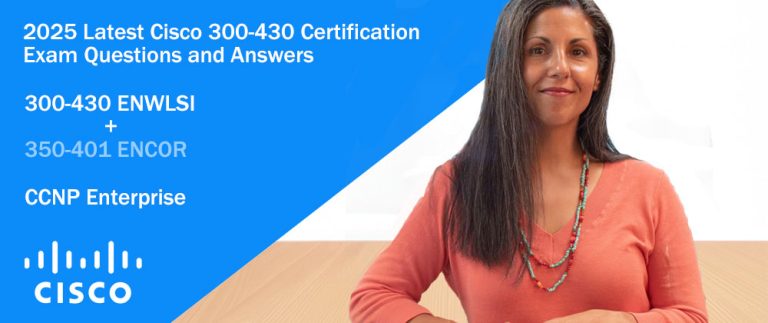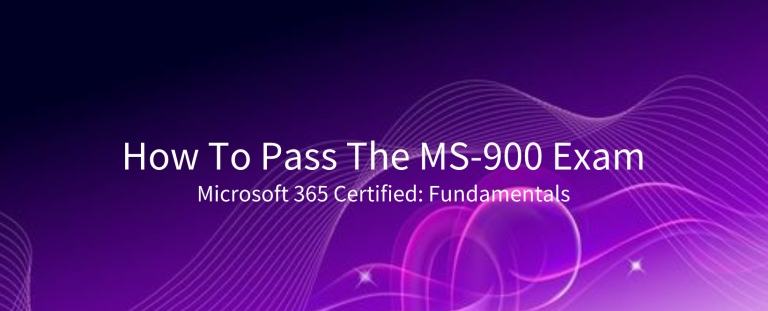GOOD NEWS: You can free download 100% accurate Cisco 642-901 practice test for training on Flydumps.com.Flydumps is also an authenticated IT certifications site that offers all the new Cisco 642-901 questions and answers timely.Visit the site Flydumps.com to get free Cisco 642-901 VCE and PDF.
Exam A
QUESTION 1
Exam Description and Topics
Exam Description:-
The Building Scalable Cisco Internetworks (BSCI 642-901) is a qualifying exam for the Cisco Certified
Network Professional CCNP, Cisco Certified Design Professional CCDP, and Cisco Certified Internetwork
Professional CCIP certifications. The BSCI 642-901 exam will certify that the successful candidate has
important knowledge and skills necessary to use advanced IP addressing and routing in implementing
scalability for Cisco ISR routers connected to LANs and WANs. The exam covers topics on Advanced IP
Addressing, Routing Principles, Multicast Routing, IPv6, Manipulating Routing Updates, Configuring basic
BGP, Configuring EIGRP, OSPF, and IS-IS.
Exam Topics:-
The following information provides general guidelines for the content likely to be included on the exam.
However, other related topics may also appear on any specific delivery of the exam. In order to better
reflect the contents of the exam and for clarity purposes the guidelines below may change at any time
without notice.
Topic 1 – Implement EIGRP operations. (64 Questions)
Explain the functions and operations of EIGRP (e.g., DUAL).
Configure EIGRP routing. (e.g., Stub Routing, authentication, etc.)
Verify or troubleshoot EIGRP routing configurations.
Topic 2 – Implement multiarea OSPF operations. (48 Questions)
Explain the functions and operations of multiarea OSPF.
Configure multiarea OSPF routing. (e.g., Stub, NSSA, authentication, etc.)
Verify or troubleshoot multiarea OSPF routing configurations.
Topic 3 – Describe integrated IS-IS. (27 Questions)
Describe the features and benefits of integrated IS-IS.
Configure and verify integrated IS-IS.
Topic 4 – Implement Cisco IOS routing features. (57 Questions)
Describe, configure or verify route redistribution between IP routing IGPs. (e.g., route-maps, default routes,
etc.)
Describe, configure or verify route filtering (i.e., distribute-lists and passive interfaces).
Describe and configure DHCP services (e.g., Server, Client, IP helper address, etc.).
Topic 5 – Implement BGP for enterprise ISP connectivity (69 Questions)
Describe the functions and operations of BGP.
Configure or verify BGP operation in a non-transit AS (e.g., authentication).
Configure BGP path selection. (i.e., Local Preference, AS Path, Weight or MED attributes).
Topic 6 – Implement multicast forwarding. (53 Questions)
Describe IP Multicast (e.g., Layer-3 to Layer-2 mapping, IGMP, etc.).
Describe, configure, or verify IP multicast routing (i.e., PIM Sparse-Dense Mode).
Topic 7 – Implement IPv6. (58 Questions)
Describe IPv6 addressing operations.
Describe IPv6 interoperation with IPv4.
Describe, configure or verify OSPF routing with IPv6 addressing.
A.
B.
C.
D.
Correct Answer: Section: (none) Explanation
Explanation/Reference:
QUESTION 2
Judging from the information provided in the exhibit, which statement is correct concerning EIGRP-discovered routes?
A. Router P4S2 will add only networks 10.1.1.0/30 and 10.1.2.0/24 to its routing table.
B. Router P4S2 will add only networks 10.1.1.0/30, 10.1.2.0/23, and 10.1.4.0/24 to its routing table.
C. Router P4S2 will add only network 10.1.2.0/24 to its routing table.
D. Router P4S2 will add only network 10.1.4.0/24 to its routing table.
Correct Answer: D Section: (none) Explanation
QUESTION 3
Which one of the following commands displays the number of times that the OSPF Shortest Path First (SPF) algorithm has been executed?
A. show ip ospf interface
B. show ip ospf database
C. show ip ospf
D. show ip protocol
Correct Answer: C Section: (none) Explanation
QUESTION 4
Based on the information that is provided in the exhibit , which description is correct?
A. OSPF router 5.0.0.2 is an ABR.
B. Network 6.0.0.0/8 is learned from an OSPF neighbor within the area.
C. A default route is configured on the local router.
D. The default route is learned from an OSPF neighbor.
Correct Answer: B Section: (none) Explanation
QUESTION 5
The P4S network administrator types in the command router ospf 1 and receives the error message: “OSPF process 1 cannot start.” (Output is omitted.) . In order to correctly set up OSPF , what should be done?
A. Ensure that IP classless is enabled.
B. Ensure that an interface has been configured with an IP address and is up.
C. Ensure that an interface has been configured with an IP address.
D. Ensure that the interfaces can ping their directly connected neighbors.
Correct Answer: B Section: (none) Explanation
QUESTION 6
Authentication is the process of determining whether someone or something is, in fact, who or what it is declared to be. How is authentication handled with OSPFv3?
A. OSPFv3 for IPv6 authentication is supported by MD5 authentication.
B. OSPFv3 for IPv6 authentication is supported by IPv4 IPsec.
C. OSPFv3 for IPv6 authentication is supported by IPv6 IPsec.
D. OSPFv3 for IPv6 authentication is supported by SHA-1 authentication.
Correct Answer: C Section: (none) Explanation
QUESTION 7
Topic – Describe integrated IS-IS. (27 Questions) Describe the features and benefits of integrated IS-IS. Configure and verify integrated IS-IS.
A.
B.
C.
D.
Correct Answer: Section: (none) Explanation
Explanation/Reference:
QUESTION 8
Study the network diagram carefully. Which routers currently compose the IS-IS backbone?
A. P4S2, P4S3, P4S6, P4S7
B. P4S3, P4S4, P4S6
C. P4S3, P4S4, P4S5, P4S6
D. P4S2, P4S3, P4S4, P4S6, P4S7
Correct Answer: D Section: (none)
Explanation
QUESTION 9
Intermediate system to intermediate system (IS-IS), is a protocol used by network devices (routers) to determine the best way to forward datagrams or packets through a packet-based network, a process called routing. In an IS-IS environment, what will occur when the designated IS router crashes?
A. A new election process occurs immediately, establishing a new DIS that will remain in place indefinitely.
B. The elected backup designated router takes the place of the DIS indefinitely without the necessity of a new election.
C. The elected backup designated router takes the place of the DIS temporarily without the necessity of a new election, until the original DIS comes back online.
D. A new election process occurs immediately, establishing a new DIS until a router with a higher priority or MAC address establishes an adjacency.
Correct Answer: D Section: (none) Explanation
QUESTION 10
Which two conclusions can be derived from the output displayed in the exhibit? (Choose two.)
A. Address summarization is configured.
B. Three physical interfaces are taking part in integrated IS-IS.
C. There are two neighboring routers sending IS-IS routing information.
D. IS-IS is not redistributing any other routing protocol.
Correct Answer: CD Section: (none) Explanation QUESTION 11
Which two statements best describe the IS-IS configurations of router P4S1 and router P4S2 in the exhibit? (Choose two.)
A. The IS-IS Level 2 metric that is assigned on the serial interface of router P4S2 is over three times the default value.
B. Router P4S1 sends only Level 1 hellos out the interface that is connected to P4S2.
C. Router P4S2 has the same metric value assigned for Level 1 and Level 2 on the serial interface.
D. The network entity titles (NETs) that are configured on L1 and L2 are incompatible.
Correct Answer: AB Section: (none) Explanation
QUESTION 12
Intermediate system to intermediate system (IS-IS), is a protocol used by network devices (routers) to determine the best way to forward datagrams or packets through a packet-based network, a process called routing. Study the exhibit carefully. Which three statements are correct regarding the IS-IS configuration? (Choose three.)
A. The interfaces have a functional IS-IS configuration.
B. The router has a system ID of 0003.0004.
C. The router acts as a Level 1-2 router.
D. The network service access point selector (NSEL) byte has a value of 0.
Correct Answer: ACD Section: (none) Explanation
QUESTION 13
Study the exhibit carefully. Which router configuration command can restrict router P4S1 from sharing its routing information with router P4S2?
A. the eigrp stub connected command on router P4S2
B. the eigrp stub connected command on router P4S1
C. the eigrp stub receive-only command on router P4S2
D. the eigrp stub receive-only command on router P4S1
Correct Answer: D Section: (none) Explanation
QUESTION 14
Which two statements correctly describe the use of Integrated IS-IS to support IP routing exclusively? (Choose two.)
A. Network devices must be configured to use the OSI CLNS protocol.
B. Each interface on an IS-IS router requires a NET address.
C. IS-IS routing packets are encapsulated within IP packets when the router does not perform CLNS routing.
D. Each IS-IS router requires a NET address.
Correct Answer: AD Section: (none) Explanation
QUESTION 15
You work as a network engineer at P4S.Examine the exhibit
carefully. The network is running IS-IS as the routing protocol. P4SA, P4SB, and P4SC are inside Cloud#1.
On the basis of
the output from P4SD, which two descriptions are correct? (Choose two.)
A. P4SD has formed an ISIS level-1 adjacency with P4SE.
B. P4SD is generating a default route into Cloud#1.
C. P4SD is the DIS for the Cloud#1 routing domain.
D. P4SE is the DIS on the link that connects P4SD to P4SE.
Correct Answer: BD Section: (none) Explanation
QUESTION 16
Which two features are of the IS-IS protocol but not OSPF? (Choose two.)
A. supports demand circuit routing
B. provides routing support for multiple network layer protocols
C. utilizes SPF algorithm
D. forms adjacencies with all neighbors
Correct Answer: BD Section: (none) Explanation
QUESTION 17
Which description is correct based on the show ip route isis output on P4S-R1?
A. The i su 10.1.0.0/23 route is a suppressed route.
B. The i su 10.1.0.0/23 route is an IS-IS external route.
C. The P4S-R1 IS-IS router is an ASBR.
D. The i su 10.1.0.0/23 route is a summary route.
Correct Answer: D Section: (none) Explanation
QUESTION 18
Drag and drop question.
Drag the items to the proper locations.
Answer & Explanation Correct Answer:-
Explanations:-
The point of this question is IS-type.
The region boundary is located on the link, i.e. each intermediate system (IS) can only belong to a region.
Therefore, the intermediate system (IS) may divide into three types: ???? Region interior router: OSPF
calls the internal router (Internal Router), ISIS calls L1 (Level 1)? carries out the regional route (is mainly
between backbone region and other non-backbone region):
But becomes the region boundary router in OSPF (ABR), is called L1/L2 in ISIS also has one kind is in the
backbone region route: Is called the backbone router in OSPF (Backbone Router), is called L2 in IS-IS (Level-2) Therefore, the Level 1 region (non-backbone region) is composed of L1 and the L1/L2 router. The Level 2 regions (backbone region) is composed of L2 and the L1/L2 router.
A.
B.
C.
D.
Correct Answer: Section: (none) Explanation
Explanation/Reference:
QUESTION 19
Study the exhibit carefully. Which one is the correct output of the command show ip route on router P4S2?
A. P4S2# show ip route <output omitted> 10.0.0.0/8 is variably subnetted, 6 subnets, 2 masks i L1 10.200.200.14/32 [115/20] via 10.1.2.4, Serial1/0 i L2 10.200.200.13/32 [115/30] via 10.1.0.1, Serial1/1 i L1 10.1.3.0/24 [115/20] via 10.1.2.4, Serial1/0 i L1 10.1.2.0/24 is directly connected, Serial1/0 i L2 10.1.1.0/24 [115/20] via 10.1.0.1, Serial1/1
i L2 10.1.0.0/24 is directly connected, Serial1/1
B. P4S2# show ip route <output omitted> 10.0.0.0/8 is variably subnetted, 6 subnets, 2 masks i L2 10.200.200.14/32 [115/20] via 10.1.2.4, Serial1/0 i L2 10.200.200.13/32 [115/30] via 10.1.0.1, Serial1/1 i L1 10.1.3.0/24 [115/20] via 10.1.2.4, Serial1/0 C 10.1.2.0/24 is directly connected, Serial1/0 i L2 10.1.1.0/24 [115/20] via 10.1.0.1, Serial1/1 C 10.1.0.0/24 is directly connected, Serial1/1
C. P4S2# show ip route <output omitted> 10.0.0.0/8 is variably subnetted, 6 subnets, 2 masks i L1 10.200.200.14/32 [115/20] via 10.1.2.4, Serial1/0 i L2 10.200.200.13/32 [115/30] via 10.1.0.1, Serial1/1 i L1 10.1.3.0/24 [115/20] via 10.1.2.4, Serial1/0 C 10.1.2.0/24 is directly connected, Serial1/0 i L2 10.1.1.0/24 [115/20] via 10.1.0.1, Serial1/1 C 10.1.0.0/24 is directly connected, Serial1/1
D. P4S2# show ip route <output omitted> 10.0.0.0/8 is variably subnetted, 7 subnets, 3 masks i L1 10.200.200.14/32 [115/20] via 10.1.2.4, Serial1/0 i L2 10.200.200.13/32 [115/30] via 10.1.0.1, Serial1/1 i L1 10.1.3.0/24 [115/20] via 10.1.2.4, Serial1/0 C 10.1.2.0/24 is directly connected, Serial1/0 i su 10.1.2.0/23 [115/10] via 0.0.0.0, Null0 C 10.1.0.0/24 is directly connected, Serial1/1 i L2 10.1.0.0/23 [115/20] via 10.1.0.1, Serial1/1
Correct Answer: C Section: (none) Explanation
QUESTION 20
Intermediate system to intermediate system (IS-IS), is a protocol used by network devices (routers) to determine the best way to forward datagrams or packets through a packet-based network, a process called routing. What are the basic configuration steps to enable IS-IS?
A. Configure the net system-id command under router isis and enable IS-IS on each interface with the ip router isis command.
B. Configure the network net-id command(s) and the is-type level-1-2 command under router isis.
C. Configure the network net-id command(s) under router isis and enable IS-IS on each interface with the ip router isis command.
D. Configure the net system-id and the network net-id commands under router isis and enable IS-IS on each interface with the ip router isis command.
Correct Answer: A Section: (none) Explanation
Cisco 642-901 only advanced and equipped with much more features,it is also not internet dependent, once installed.It enables you to see Interconnecting Cisco Networking Devices Part 1 questions and answers in a simulated Cisco 642-901 exam environment. Working with Cisco 642-901 Interactive Testing Engine is like passing an actual Cisco 642-901 exam.



